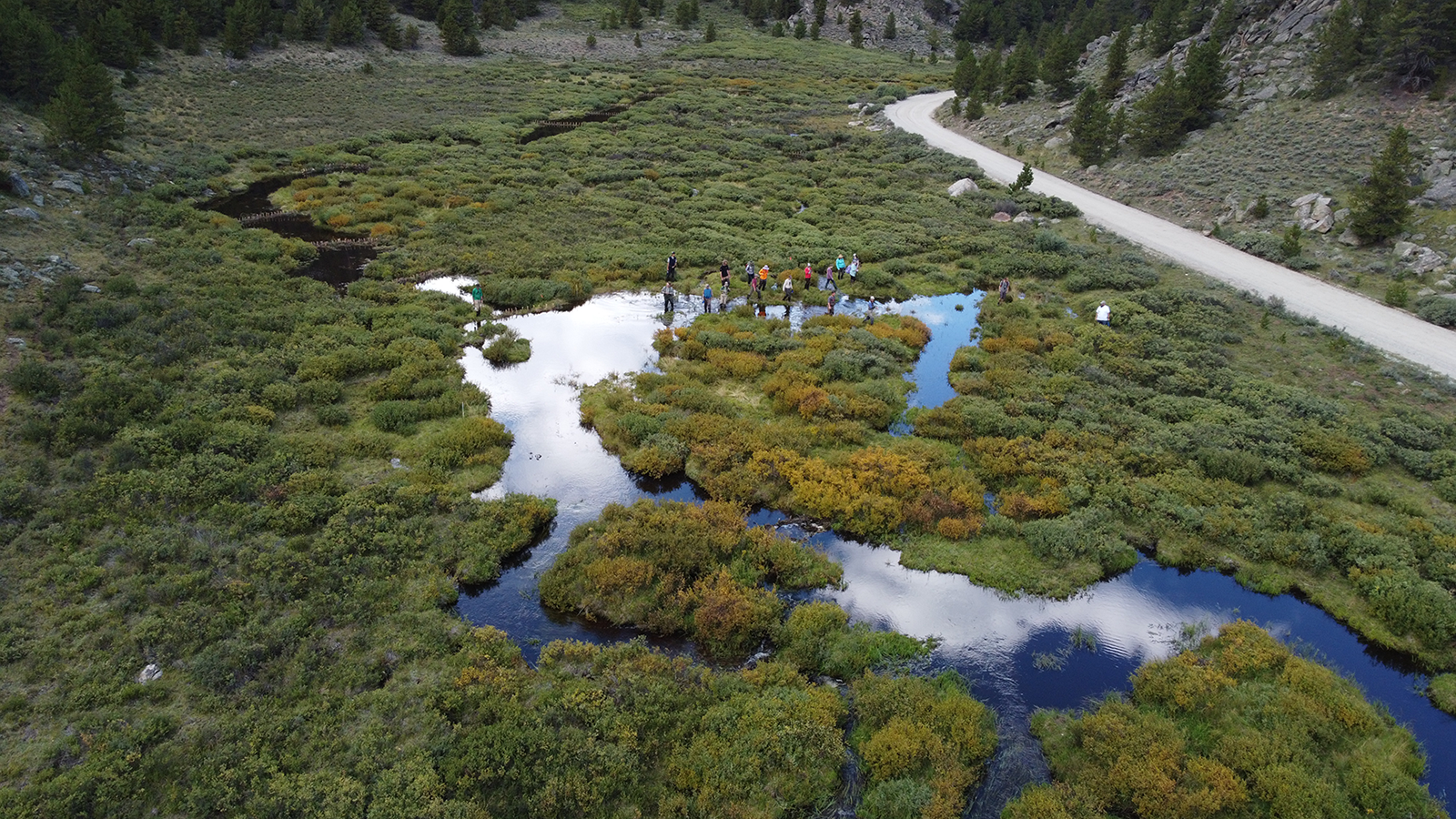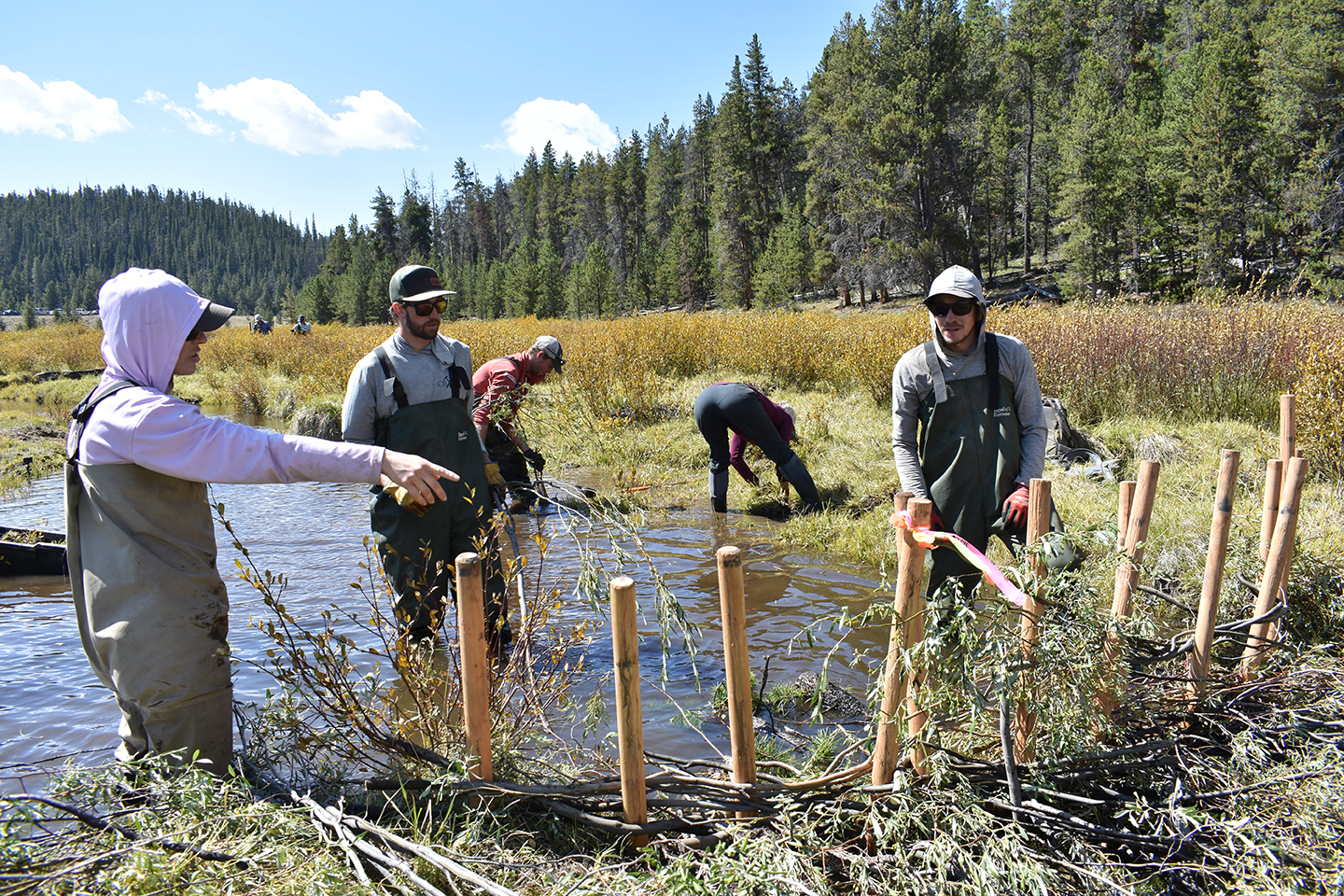After decades of drought, communities across the Colorado River Basin are having difficult conversations about how to preserve the river system that 40 million Americans rely on for their livelihoods, and culture. The National Forest Foundation (NFF) is working with an unlikely hero to build a solution: the beaver.
The Colorado River’s epic 1,450 mile journey across the American West begins high in the Rocky Mountains, where snowmelt from National Forests feeds the river’s headwaters. Before European fur trappers arrived, these streams meandered through alpine meadows, flooding the surrounding land and creating thriving riparian ecosystems. But the decline of these ecosystems’ keystone species, the beaver, means water rushes by before it can become the groundwater that surrounding communities can use to weather drought.

Western Colorado University students participating in the stream restoration activities on Trail Creek. Photo by Ecometrics.
Now, with a little help, beavers and their historical habitats are making a comeback. Starting in 2021, the NFF has built beaver dam analogs along Trail Creek on the Gunnison National Forest above Crested Butte, Colorado.
These dam analogs have slowed stream flow and created wetland habitat, which has attracted beavers back to the area. The beavers’ return makes these wetlands sustainable, radically altering the future of the ecosystem by reducing soil erosion, increasing resilience to floods and wildfires, and helping communities weather drought.

Volunteers work together to weave willow cuttings between posts placed in the stream, creating a post-assisted log structure, or a PAL. PALs help slow the water as it moves through a system, allowing more water to seep into the surrounding riparian habitat. Photo by Eli Smith.
This type of low-tech, process-based restoration offers a promising and simple way to start revitalizing the streams and riparian areas that feed the Colorado River.
With the success of Trail Creek, the NFF is now scaling up this work across the Colorado River Basin, with the goal of creating an interconnected system of restoration projects to support the vital lifeline of the West, the Colorado River.
Cover photo by Eli Smith.

